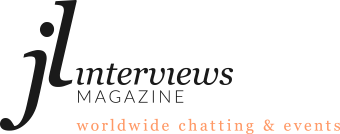
Carl Heyward, an American contemporary artist based in Benicia, California, is making waves in the art world with his thought-provoking works that explore the theme of fragmentation. As the founder of the Global Art Project (GAP), Heyward fosters a collaborative environment for artists, encouraging experimentation and creative freedom. His approach is deeply rooted in community building, allowing artists to share ideas and resources, enriching their individual practices.
Heyward’s artistic philosophy is evident in his series “Marking Time,” where he describes his work as existing at the intersection of want and need, the subtle and the exuberant, and the ethereal and the concrete. This series, featuring pieces like “Marking Time #1 and #2,” utilizes acrylic paint and graphite crayon on lithography paper, showcasing his instinctive manipulation of materials to create highly expressive works.
Heyward’s influence extends beyond his individual creations. His role as a mentor emphasizes collaboration and experimentation, allowing artists to push the boundaries of their creativity. This holistic approach acknowledges the interconnectedness of personal and professional growth, making GAP a nurturing space for emerging and established artists alike.
In his own words, Heyward reflects on the greatest challenges he faces: “The greatest and most daunting border or sets of limitations I encounter are those I have imposed upon myself that restrict living fully, freely and functionally in this or any culture.” He explains that the totality of experiences, both personally encountered and witnessed, shapes one’s sense of identity, placement, and possibilities. He emphasizes the complex realities of being an African-American in America, noting that “the determination of where one fits in and what that looks like… is skewed, sometimes bleak, distorted and culturally restrictive despite obvious inroads along the 400-year path toward equality.”
Heyward’s commitment to addressing these themes is evident in his participation in exhibitions like “CrossingBorders: We Are All Immigrants,” which delves into how borders shape perceptions and experiences. He challenges viewers to reflect on their own boundaries and asks poignant questions: “What borders are you willing to cross?” Through his art, he invites us to consider the emotional and psychological significance of crossing borders, both literal and metaphorical.
The artist also addresses the importance of mentorship within the Global Art Project, stating, “GAP allows an incidental platform for mentorship and while that is not the stated purpose of the group nor is/was my conscious intention in its founding, mentorship has emerged as an essential component of this international collaborative collective.” He believes that through interaction—formal or informal—there lies the potential to impart valuable perspectives to emerging artists struggling to achieve their goals.
Heyward emphasizes that “the border that opens onto all other possibilities… lies in attitude.” He encourages artists to adopt a mindset of risk and fearlessness, acknowledging fear but not allowing it to hinder their creative journeys. “Accept yourself, accept what you are doing because in review, a body of work is a blueprint for who you are, have been and an indication of where you can go,” he advises. He believes that making “bad art is better than not making art at all,” reinforcing the idea that the creative process is a vital part of personal growth.
Carl Heyward’s journey as an artist is a testament to the power of creativity in addressing complex themes of identity and belonging. His work not only reflects his personal experiences but also serves as a catalyst for dialogue among artists and audiences alike. As he continues to explore the intersections of art and life, Heyward remains a vital figure in contemporary art, inspiring others to embrace their own creative journeys.
Photo credits: The photographs are from the artist’s archive.









